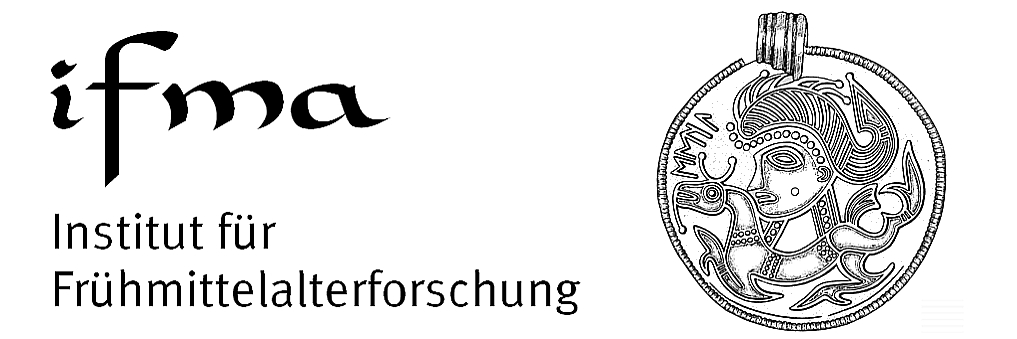
TMR 99.04.04
Iogna-Prat, Dominique, Ordonner et Exclure: cluny et la société chretiènne face à l'hérésie, au judaisme et à l'islam, 1000-1150. Paris: Aubier, 1998 . Pp. 508. 2-700-72287-6.
Reviewed by Tom Burman, University of Tennesee at Knoxville, teburman@utkux.utcc.utk.edu.

n the first lines of the concluding chapter of this important study, the author observes, following Lessing, that "paradoxically, what unites mankind. . . is, at the same time, that which divides" (p. 360). It is not at all inaccurate to say that the burden of this book is to show just how true this was for that church-within-the-Church, the Cluniac order, and its leading twelfth-century thinker, Peter the Venerable. The author makes clear that Anglo-American scholars such as R. I. Moore and John Boswell inspired this exploration of the rise of intolerance toward minority groups in the High Middle Ages, but unlike them Iogna-Prat has adopted an intriguing "micro-historical analysis" (p. 367) in which Peter the Venerable's treatises against the Petrobrusian heretics, the Jews, and Islam are used to show how "the persecution and diabolization of the Other" became "a structural necessity" (p. 32) for Peter the Venerable because of a specific sort of ecclesiological anthropology that had developed within the Cluniac order. What unites society--an intensely sacramental view of the church as united and sustained by the monk-priest's presiding over the eucharistic sacrifice--is that which divides, for Petrobrusians, Jews, and Muslims are excluded from this unity by their refusal to recognize the validity of the Mass. This approach to Peter's writings against heretics and non-Christians is eminently useful. First of all it serves to ground the analysis of Peter's treatises in the concrete experience of a very particular abbot of a very particular monastic order (a type of grounding much needed in the analysis of such works). Secondly, since the Cluniac order was, in its vast geographical extent and remarkable diversity, something of a microcosm of the Church anyway, the micro-historical analysis assayed here turns out to shed a great deal of light on the macro-historical experience of the Latin Church. This is, in short, a very intelligently wrought book, one that will make a great contribution to our understanding of European attitudes toward non-Catholic Christians both within and without Christendom.
The first of the book's three parts, "Monks and the Order of the World," provides the reader with an extensive overview of Cluny's history and organization. Chapter 1 summarizes the development of Latin-Christian views on the ordering of society, and especially of the Gregorian conception of a Christian society regulated by the clergy. The much longer second chapter ("A Monastic Church within the Church") then describes how Cluny and its far-flung dependencies to a substantial degree incarnated this view. The emphasis here is--ironically--on inclusion. As Cluny gained prestige and privileges, it incorporated into itself not only monks from other houses (a result of its right to receive outside monks in need of penitence and reform) and whole monastic foundations, but also, Iogna-Prat argues, lay society as well through its hospice for travellers, its extensive almsgiving, and, most importantly, its close connections with powerful families who gave great wealth to Cluny and sent many of their children to become professed religious at its houses. Moreover, Cluny exercised influence not only through the foundations that were juridically dependent upon it, but also through the monks that, having been elevated to the prelacy, were no longer subject to Cluny's authority, but continued to bear "the indelible mark" (p. 53) of their Cluniac profession, and through houses such as Nouaille that merely adopted its customs though they remained independent. Its authority extended even into the parish network because of the many churches it possessed. With its many daughter houses and dependent parishes, therefore, with its affiliated convent for women (Marcigny-sur-Loire), its ties to non-Cluniac foundations (including Grande-Chartreuse), its hermits living under Cluniac authority, its refuge-seeking penitents (both clerical and lay), pilgrams, and poor, and its manifold links to the secular and ecclesiastical aristocracy, Cluny tended, Igona-Prat points out, to see itself as "une manière d'Église en reduction" (p. 52) or even to identify itself with the Church as a whole (p. 44).
But this voracious inclusiveness became exacting exclusiveness when Peter the Venerable confronted those who rejected the principle of unity that bound all this diversity together. In Part 2 Iogna-Prat clarifies both what this unifying principle was and how the heretical followers of Pierre de Bruis denied it through a painstaking analysis of Peter's Contra Petrobrusianos. This refutation of the Petrobrusians' five essential heretical teachings--that infants should not be baptized; that all places are equally holy to God (so physical churches should not be built); that crucifixes should not be venerated; that the Eucharist is invalid; and that the dead should not be memorialized with prayers and offerings--"sketches," Iogna-Prat argues, "the contours of a sociology of Christendom in the feudal age" (p. 255). Chapters 3 and 4 set forth the necessary background to this argument by analyzing the genre of Contra Petrobrusianos and its "defensive argumentation" in particular, and by outlining the development of the Petrobrusian movement. Chapters 5, 6, and 7 outline Peter's response to the Petrobrusian denials. In the course of attacking these denials, Peter lays out an ecclesiology in which Church and society are identified with each other, and the foundation of both is held to be the sacrifice of Christ, both originally at Calvary, and repeated over and over again in the Eucharist. Baptising infants is necessary to preserve the holistic unity of this Christian society; building physical churches merely provides a special place, which "all religions require," where the most important acts of worship, the Eucharistic sacrifice included, can occur; venerating the cross merely means honoring the instrument of torture transformed into an instrument of glory in the original sacrifice itself; prayers and offerings for the dead are the natural consequence of the Church's extension into the hereafter. Undergirding all this is the sacrifice itself. When Petrobrusians deny the validity of the Eucharist that reenacts it, they deny the mystery that makes Christian society possible.
As Iogna-Prat goes on to argue in Part 3 of Ordonner et exclure (Chapters 9-12), the "logique englobante" (p. 363) of this Cluniac ecclesiology naturally led Peter the Venerable to find contemporary Judaism and Islam particularly troubling as well, for not only did they deny the sacrifice at the core of this view of Christian society, but they also rejected priestly celibacy which, as Iogna-Prat puts it, "institutes the clergy and puts them in the position of managing the exchanges with the hereafter that occur in the eucharistic sacrifice" (p. 366). These other religions, then, represent not only a rejection of Christian belief, but also a denial of the specific Christian ecclesiology that explained the great prestige and power of Cluniac monk-priests. This is what accounts, Iogna-Prat suggests, for the bitter tone of Peter's Adversus Judeos, Summa haeresis Sarracenorum, and Contra sectam Sarracenorum: those who so obviously seek to overturn the very structure of society must be either inhuman or inspired by the devil.
The first part of his treatise against the Jews fits well within the age-old tradition of Christian apologetic--Peter arguing, for example, that verses such as Psalm 109:3 in the Vulgate ("Among the splendors of the saints, from the womb, before the dawn I engendered you") counter the Jewish claim that God has no son, while the miracles that accompanied the expansion of the early church are clear evidence of God's favor. But the last part of the work is an innovative attack on the "ridiculous fables" of the Talmud, a text of which western Christians had been largely ignorant. Using what seems to have been an anthology of passages from the Talmud and other related works, Peter proceeded to argue that people who could believe the sort of wild tales that he cites (involving, for example, heavily anthropomorphized depictions of God) are not only unbelievers: they are inhuman as well (p. 304).
While Peter's stubborn refusal to understand the tone and purpose of these Talmudic tales is dismaying to modern readers, we cannot help but admire his industrious seeking out of authoritative Jewish texts to use in his arguments against Judaism. His approach to Islam is very similar, for, as is widely known, Peter commissioned the translation of the so-called Collectio toletana, a set of Arabic texts, including the Qur'an, for use in Christian apology and polemic. For the first time Latin Christendom possessed a substantial body of basically accurate information about Islam. But then Peter uses this information, Iogna-Prat shows in Chapter 11, to demonize Islam. His Summa haeresis Sarracenorum, which accompanies the Collectio toletana in many manuscripts, is an introduction to Islam; his much longer Contra sectam Sarracenorum is a refutation of it. In the former Muhammad is portrayed as an uneducated Arab led astray by the devil through his contacts with heretical Christians and Jews, and whose teachings represent "the sum of all heresies" (p. 340). In the longer treatise Peter takes on Islam directly by arguing that the Qur'an itself requires that Muslims accept the validity of Christian scripture, and by attempting to show that Muhammad is not a prophet since his life does not conform to what Peter sees as the Old-Testament model of prophecy. Peter was heavily dependent on earlier Arab-Christian portrayals of Muhammad and Islam, yet his response to the Prophet's religion, like his more innovative response to Judaism, is undergirded by the same view of the church and society that his attack on the Petrobrusians was. Just as those heretics struck at the very structure of the Church and Cluny itself by attacking the eucharist, so, in Peter's mind, Islam, "a religion without priest and without sacramental mediation," (p. 358) represented, with Judaism, a threat to the very sacrificial foundations of Christendom.
Iogna-Prat has done a great service in demonstrating the close connections between these treatises and between them and the specific Cluniac world out of which they grew, and for doing so with such precision and richness of detail. Ordonner et exclure is the fruit of enormous labor. The author's knowledge of the secondary literature is vast, and his careful analysis of Peter's works against heretics and non-Christians is unequalled (though John Tolan has very valuable things to say along these lines in an article published at virtually the same time: "Peter the Venerable on the 'Diabolical Heresy of the Saracens,'" in A. Ferreiro, ed., The Devil, Heresy and Witchcraft in The Middle Ages: Essay in Honor of Jeffrey B. Russell [Leiden, 1998], pp. 345-67). Iogna-Prat's book should serve as a model both for how a medieval thinker's response to the religiously other can be elegantly contextualized within the particular concerns and tendencies of a sub-community of the Church, and for how such a "micro-historical analysis" can be made to illuminate general attitudes toward outsiders as well. For having shown to what extent Cluny, as "une Église en réduction," recapitulates many of the tendencies of the eleventh and twelfth centuries, Iogna-Prat also manages to suggest the powerful ways in which that age's inclusive attempts to order Christian society inevitably involved exclusion as well.
The Medieval Review
The Medieval Institute, Western Michigan University
Distributor: Humanities Text Initiative


